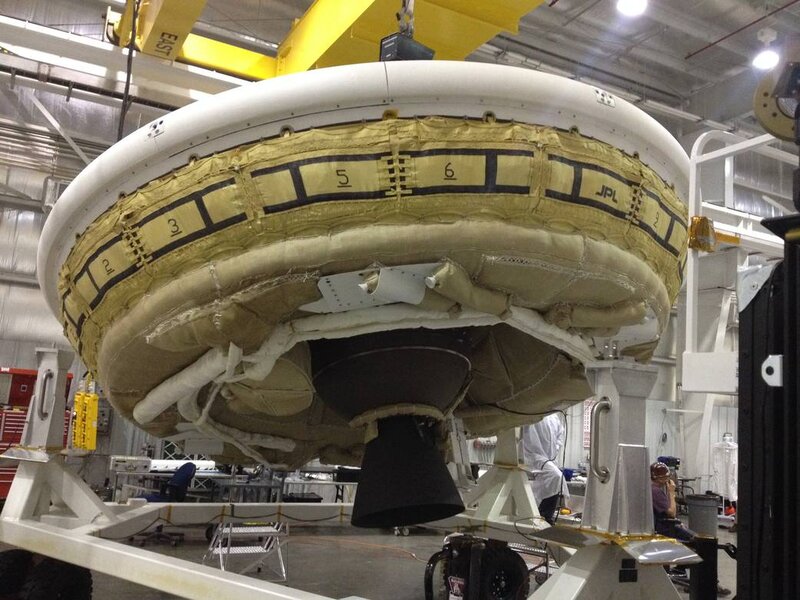NASA prepares to test supersonic spacecraft for Mars mission
Loading...
NASA announced Wednesday that it will perform a second test launch of the Low-Density Supersonic Decelerator (LDSD) spacecraft, on Tuesday, June 2, from the the US Navy's Pacific Missile Range Facility in Hawaii.
The LDSD mission, led by the Jet Propulsion Laboratory in Pasadena, California, is part of NASA’s ongoing preparation to send humans to an asteroid by 2025 and Mars by 2030.
“They’ll need to haul sizeable payloads to accommodate long stays on the Martian surface, and must fly back and forth more quickly to minimize human exposure to space radiation,” Kim Newton wrote in a blog post for NASA. “That means finding new ways to slow down when our spacecraft reach their destinations, effectively countering those faster flights and payloads of greater mass.”
The LDSD is designed to travel faster than the speed of sound and create atmospheric drag, which NASA hopes will be the solution to slowing down the larger spacecrafts needed for Mars exploration. This upcoming test will simulate the supersonic entry and descent speeds required to travel through Martian atmosphere by descending through Earth’s atmosphere.
The space agency is currently developing two additional supersonic vehicles, which are capable of creating atmospheric drag, to land a spacecraft with a large payload the surface of Mars.
"The first two are supersonic inflatable aerodynamic decelerators – very large, durable, balloon-like pressure vessels that inflate around the entry vehicle and slow it from Mach 3.5 or greater to Mach 2 or lower," NASA wrote. "Also in development is a 30.5-meter-diameter parachute that will further slow the entry vehicle from Mach 1.5 or Mach 2 to subsonic speeds. All three devices will be the largest of their kind ever flown at speeds several times greater than the speed of sound."
NASA previously tested the LDSD in June 2014. The test, despite some complications, was declared a success as it proved the flight worthiness of the vehicle.
You can watch the test launch on NASA TV’s live-stream at 1 p.m. Eastern next Tuesday.








